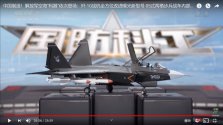Well, two RD-33s provide more thrust than one AL-31. That’s why I went with the EJ-200 to F135 comparison. Much more comparable total thrust between two EJ-200s and one F135 than two RD-33s and one Al-31. You’re talking about using a single engine to power a *mid-weight* fighter, not a light weight one. Again, the internal bays disqualifies the possibility of a single engine fighter being light.Not the fairest comparison - F135 with EJ200. Wonder what the difference is between a Al-31 and RD-33. It's probably nowhere near 2 times greater. Then there's twice the maintenance man hours and material consumed. Also more chances of aircraft being grounded or at least a lower serviceability rate since twin engined fighters have twice the chance of engine drama that reduces their readiness. These are all cost factors, not only the purchase price of the engine. If this weren't such a big deal, the Americans wouldn't have bothered with the F-16 or F-35.
Double the maintenance perhaps, but you don’t need a 1:1 reserve of engines for your maintenance schedule to maintain readiness. Smaller engines also tend to have better service schedules since being smaller means less mechanical strain on the parts. And also you don’t need to invest in a *third* fighter development program and a *third* supply chain in the specific case we’re talking about, if this is really all about the money.
Last edited:

